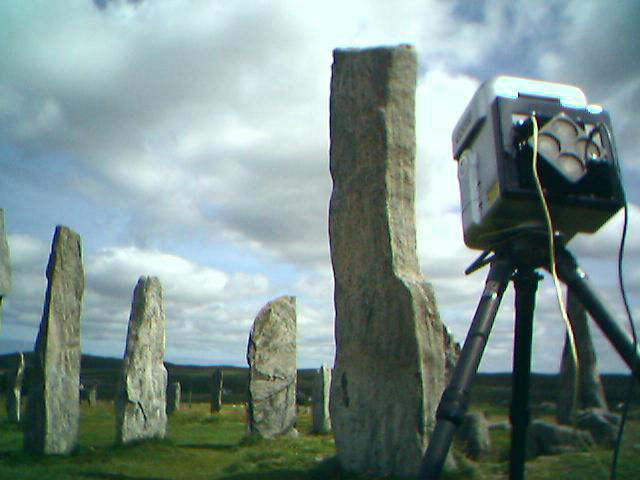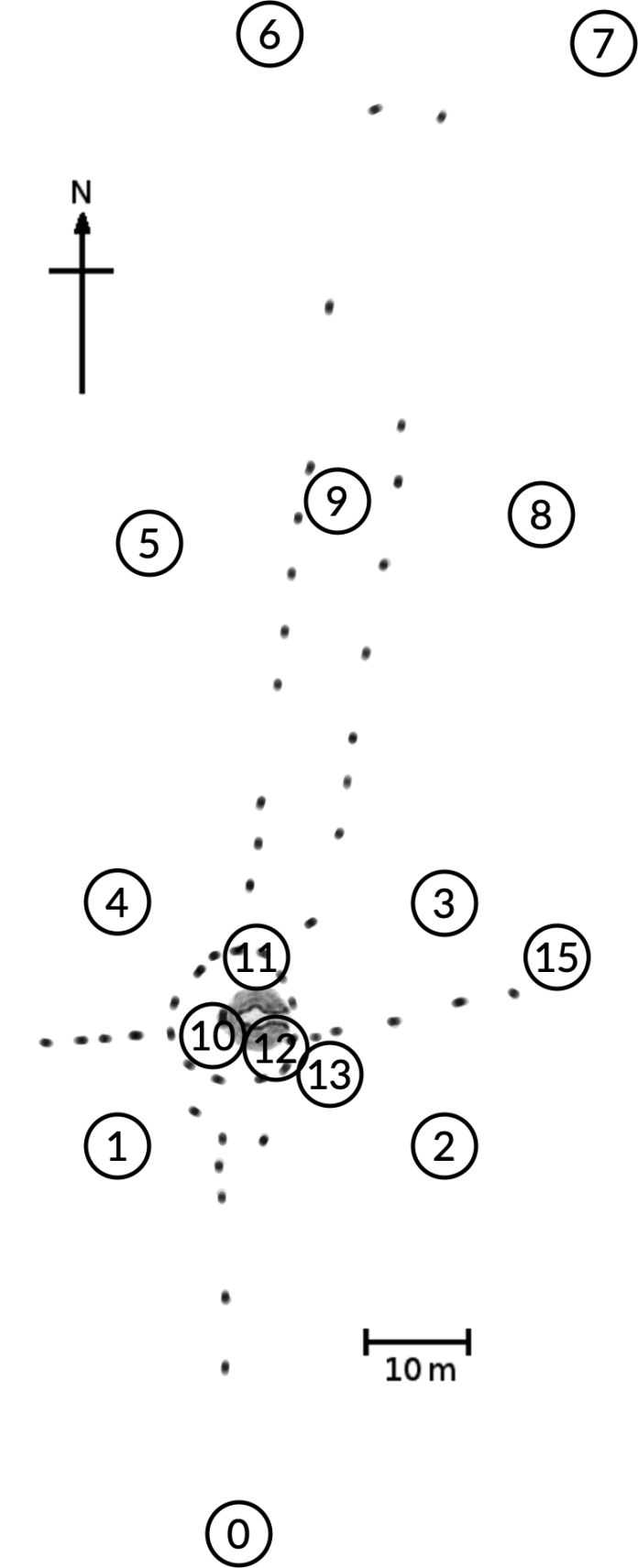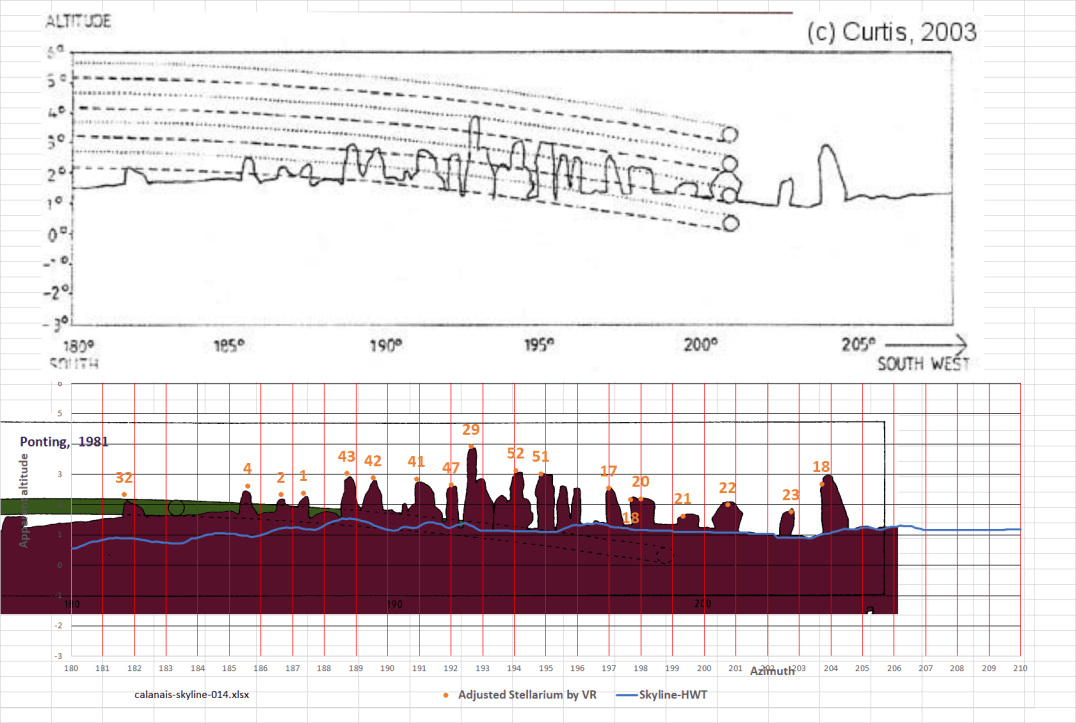Survey
To achieve coverage of the entire megalithic setting, the scanner needs to be moved to different positions, or "stations". The scans are then "registered" together such that they are in the correct position with respect to each other then a final stage called "integration" generates a final 3D model.
As the Callanish I monument is fairly spread out (approximately 150m north to south) and that we wanted dense scanning coverage of the megaliths, 14 stations were required to get coverage of all the stones from all angles.
The scanner typically would take a panoramic photograph which was then used for targetting of specific areas for high-resolution scanning. This enabled a two-pass approach of very high-resolution scanning of just the megaliths with a second pass of low-resolution scanning of the ground surface.
Scans were registered initially using three or four control spheres. These are white, ceramic spheres which are scanned at high-resolution from each station. The sphere centres are then calculated from the 3D data and the matching points are used to compute a transformation between the sphere centres at one station and the next station. A final registration pass of "mesh-to-mesh registration" was also done just to diffuse any sphere registration error.
A handheld GPS was used to take control coordinates of each station which was adequate as a first pass for a georeferenced survey.
In total, over 50 million measurements were taken over three days.



